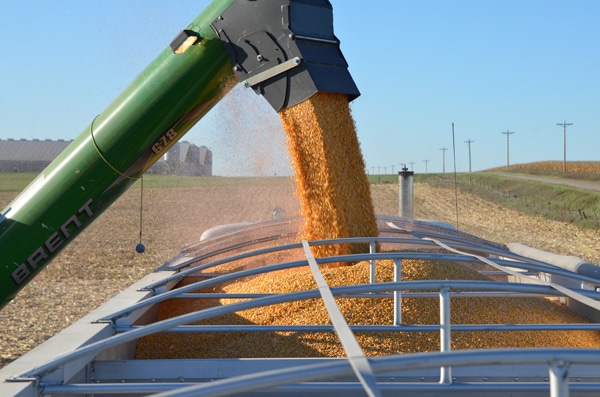November 12, 2012

The USDA November forecasts of the size of the 2012 U.S. corn and soybean crops were larger than expected, particularly for soybeans. As a result, the general downtrend in soybean prices since mid-September has accelerated, with January futures now at the lowest level since June 29. Corn prices have moved into the lower half of the trading range that has been in place since mid-September and December futures are at the lowest level since Sept. 28. “So far, prices seem to be following the classic pattern associated with small crops – peaking early in the marketing year and then declining as the year progresses,” says University of Illinois Agricultural Economist Darrel Good.
Read the November 2012 Crop Production report.
According to Good, the futures market reflects expectations that prices will continue to decline, especially into the 2013-2014 marketing year. “The expected rebound in South American soybean production, Argentine corn production and U.S. corn and soybean production in 2013 all contribute to the expectation of lower prices,” he says. “If those crops are as large as generally expected, prices will be even lower than currently reflected in the futures market.”
Good says that the USDA is forecasting record South American production of both crops. “If planted acreage of corn in the United States in 2013 is at the same level as in 2012 and the U.S. average yield is near a trend value of 162.5 bu., the crop would total 14.6 billion bushels, about 1.5 billion larger than the record crop and record consumption of the 2009-2010 marketing year, Good says. Similarly, he reports, if soybean acreage is maintained at the 2012 level and the average yield is near the trend value of 43.8 bushels, the 2013 crop would reach 3.34 billion bushels, near the record levels of 2009 and 2010. A combination of record, or near-record, South American and U.S. crops in 2013 would likely push prices down to or below the long-term averages of about $4.75 for corn and $11 for soybeans.
Read more on the 2013 acreage watch from Brock Associates.
“While the expectation for lower corn and soybean prices in 2013 is reasonable based on historical patterns and prospects for large crops, the timing and speed of the return to more ‘normal’ prices will be influenced by a large number of factors,” Good said. “The final estimate of the size of the 2012 crops to be released on Jan.11, 2013, is one of those factors. For soybeans, the pattern of 2012 yield forecasts to date, lower in September and higher in October and again in November, was experienced six other times in the previous 30 years. The yield estimate released in January following harvest in those six years was above the November forecast three times and below the forecast three times. The deviation ranged from 0.1 to 0.8 bu.,” Good says.
History does not provide much guidance for forming expectations this year, Good says. “For corn, the pattern of yield forecasts this year, lower in September and October and higher in November was experienced only two other times,” he says. “The January yield estimate equaled the November forecast in one of those years and exceeded the November forecast by 0.7 bu. in the other. Again, history provides little guidance for forming January yield expectations this year,” he says.
Harvested acreage and supply
Good says that the bigger issue for corn production may be the January estimate of acreage harvested for grain. There is a general expectation that the USDA’s large December survey may reveal fewer acres than currently forecast.
“On the supply side, the progress of the South American crops will be most important for the next three months,” Good says. “Weather conditions are currently improving somewhat from early wet conditions in Argentina and dry conditions in central and western Brazil. Some on-going dryness is noted in southern Brazil and Paraguay. Some argue that corn production potential has already been reduced in Argentina. For the near term, markets will likely continue to reflect expectations of very large crops,” he says.
Good says that prices will also be influenced by the ongoing rate of consumption of the 2012 U.S. crops. For corn, there is some anticipation that the pace of export activity, which has been extremely slow to date, may accelerate as South American supplies dwindle and Asian customers return to the U.S. market.
“The larger issue, however, surrounds the pace of domestic feed and residual consumption,” Good said. “The USDA’s estimate of Dec. 1, 2012, stocks to be released on Jan. 11 will provide some much needed clarity to the rate of consumption in the last quarter of the 2011-2012 marketing year and the first quarter of the 2012-2013 marketing year. For soybeans, the National Oilseed Processors Association estimate of the size of the October crush is expected to be released later this week. That estimate will provide insight into the pace of crush relative to the projected rate. The pace of new export sales will also be important, with some concern about cancellations of earlier purchases by some customers.
“Prospects for further price declines for corn and soybean into 2013 favor pricing more of the old and new crop sooner rather than later. However, the transition to lower prices will be erratic so that timing of sales will still be important. Recent price declines, particularly for soybeans, seem to be a little excessive given the amount of production uncertainty,” Good says.
You May Also Like




